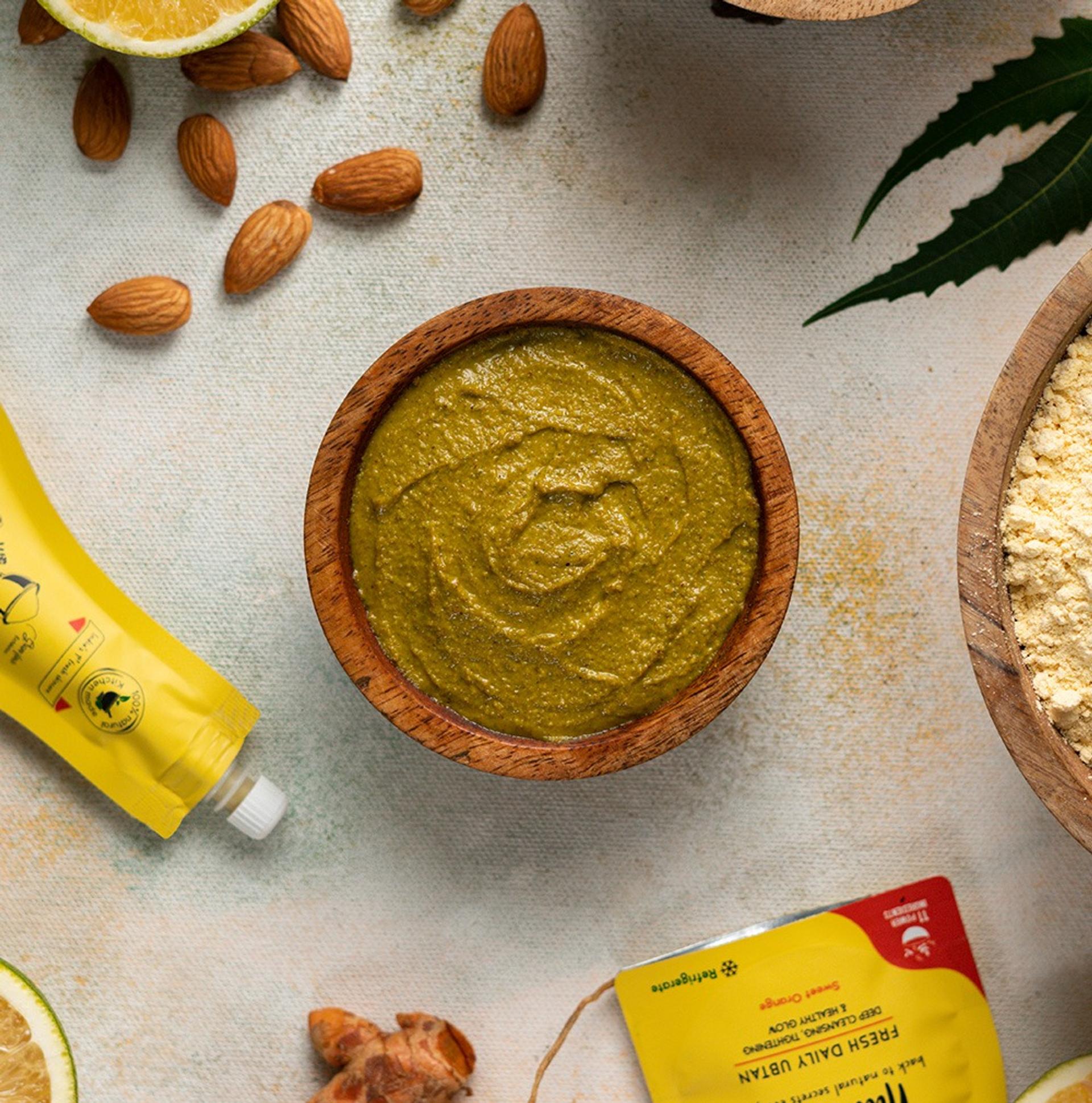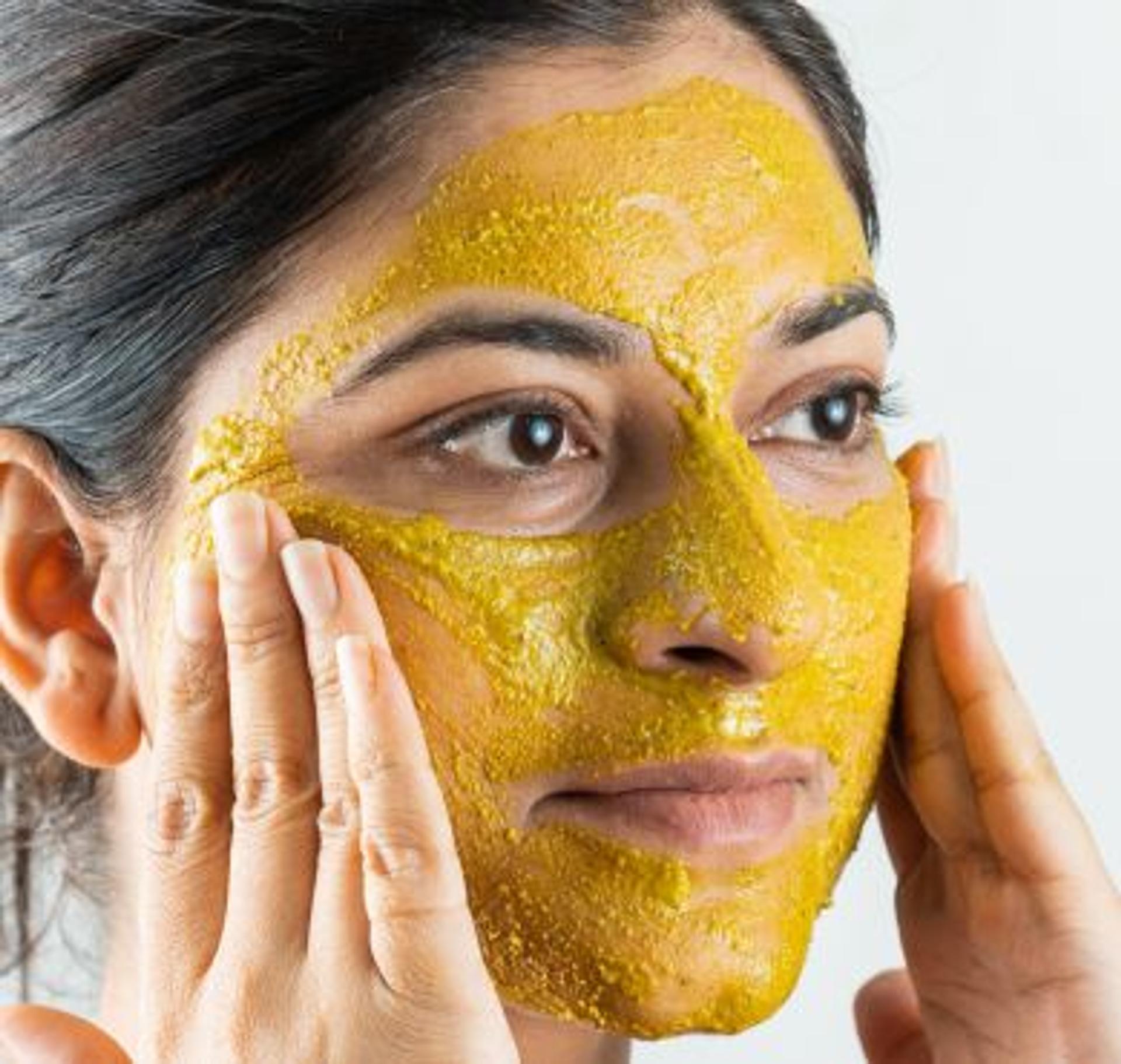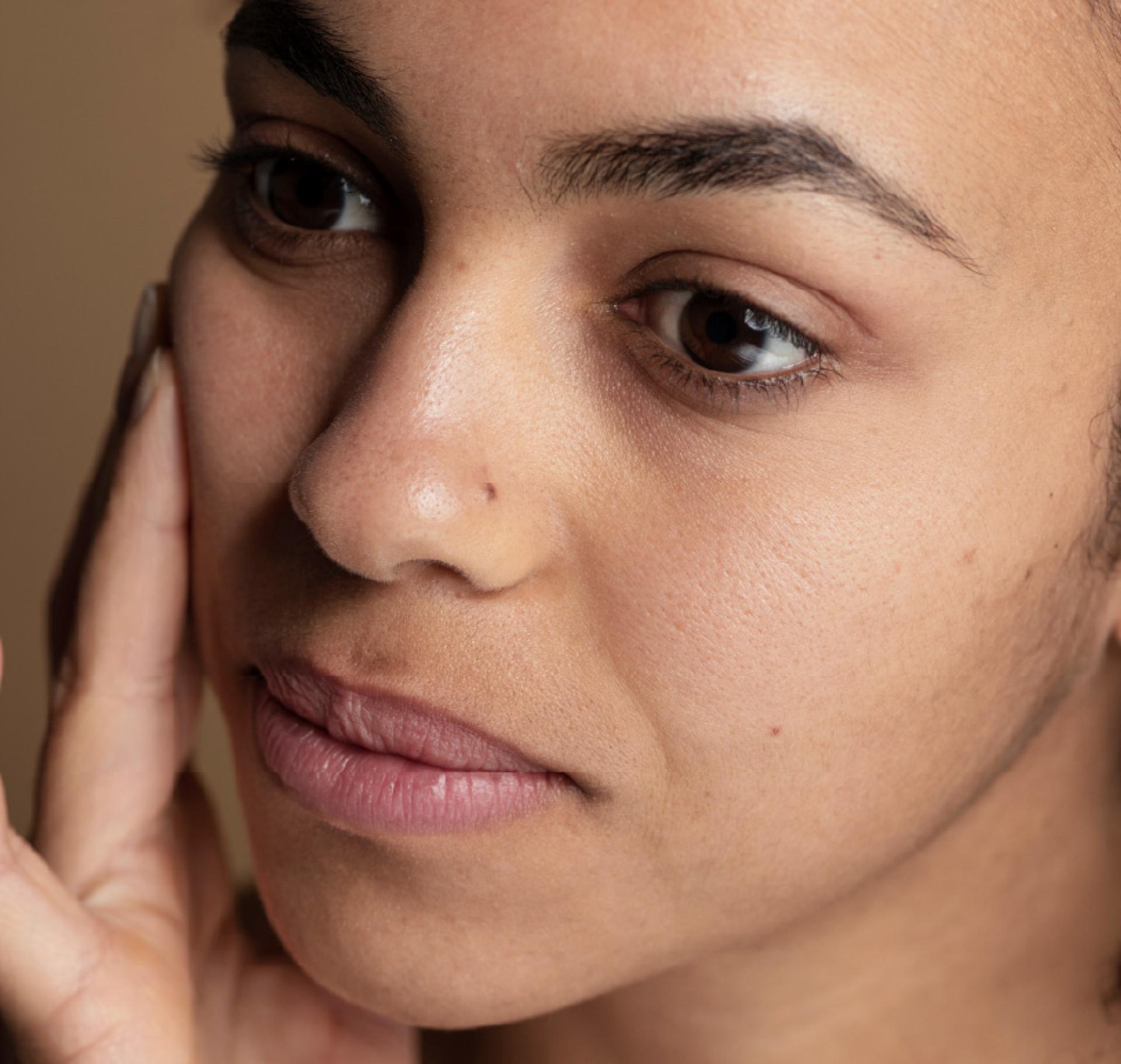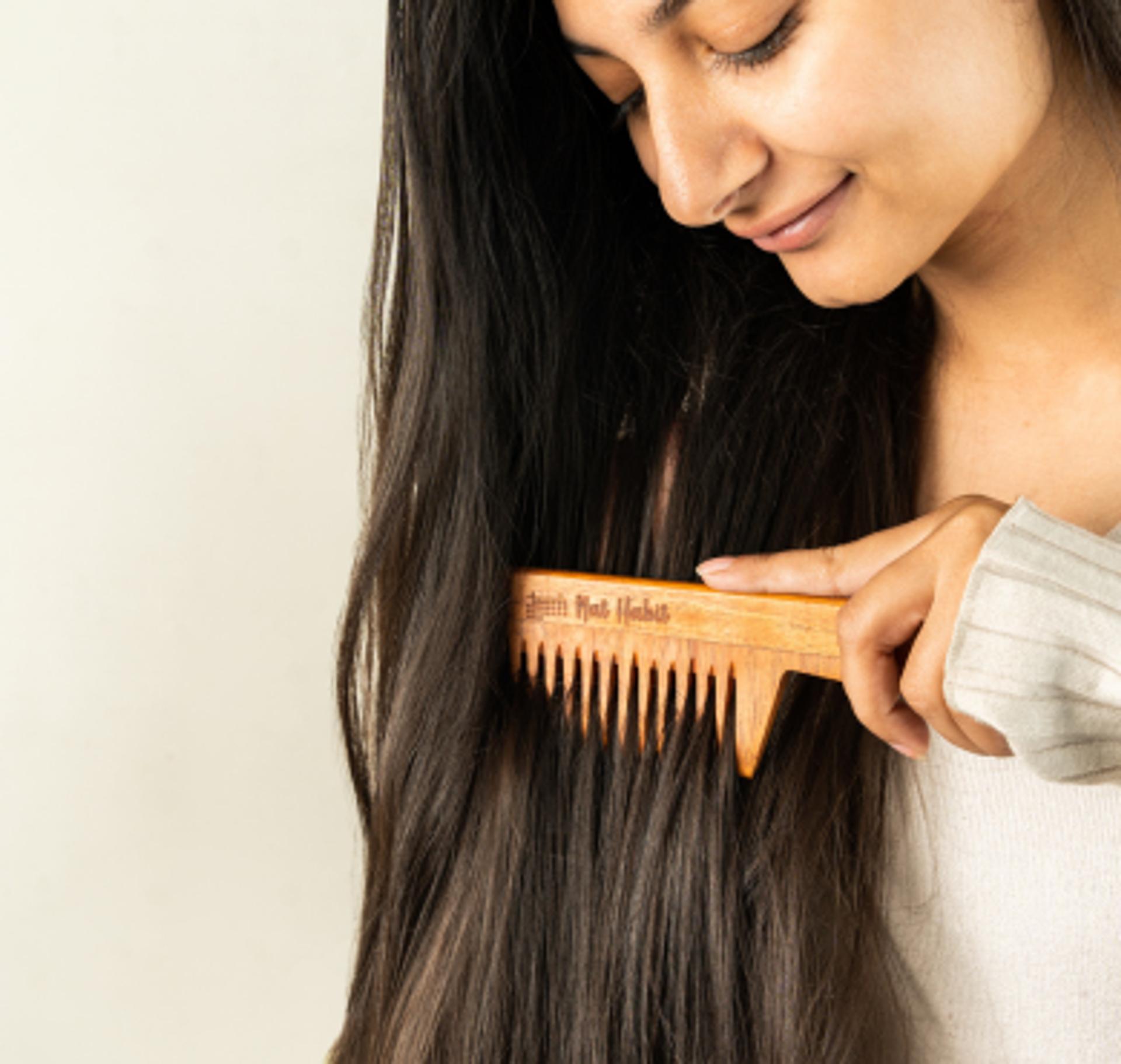
The Science of Combing
A Ritual Beyond Detangling
By Nat Habit
Combing hair is often seen as a mechanical task - a quick sweep to remove knots. But in truth, it's far more than that. When done mindfully and with the right tool, combing becomes a therapeutic ritual - stimulating scalp’s physiology, redistributing nourishment, and supporting the natural ecosystem of hair and skin.
Especially when done with a natural wooden comb, this seemingly simple act becomes a multi-dimensional practice—activating ancient energy points, enabling oil transfer, and cleansing the scalp in scientifically significant ways.
1. Activating Marma Points
Enhancing Microcirculation at the Root Level
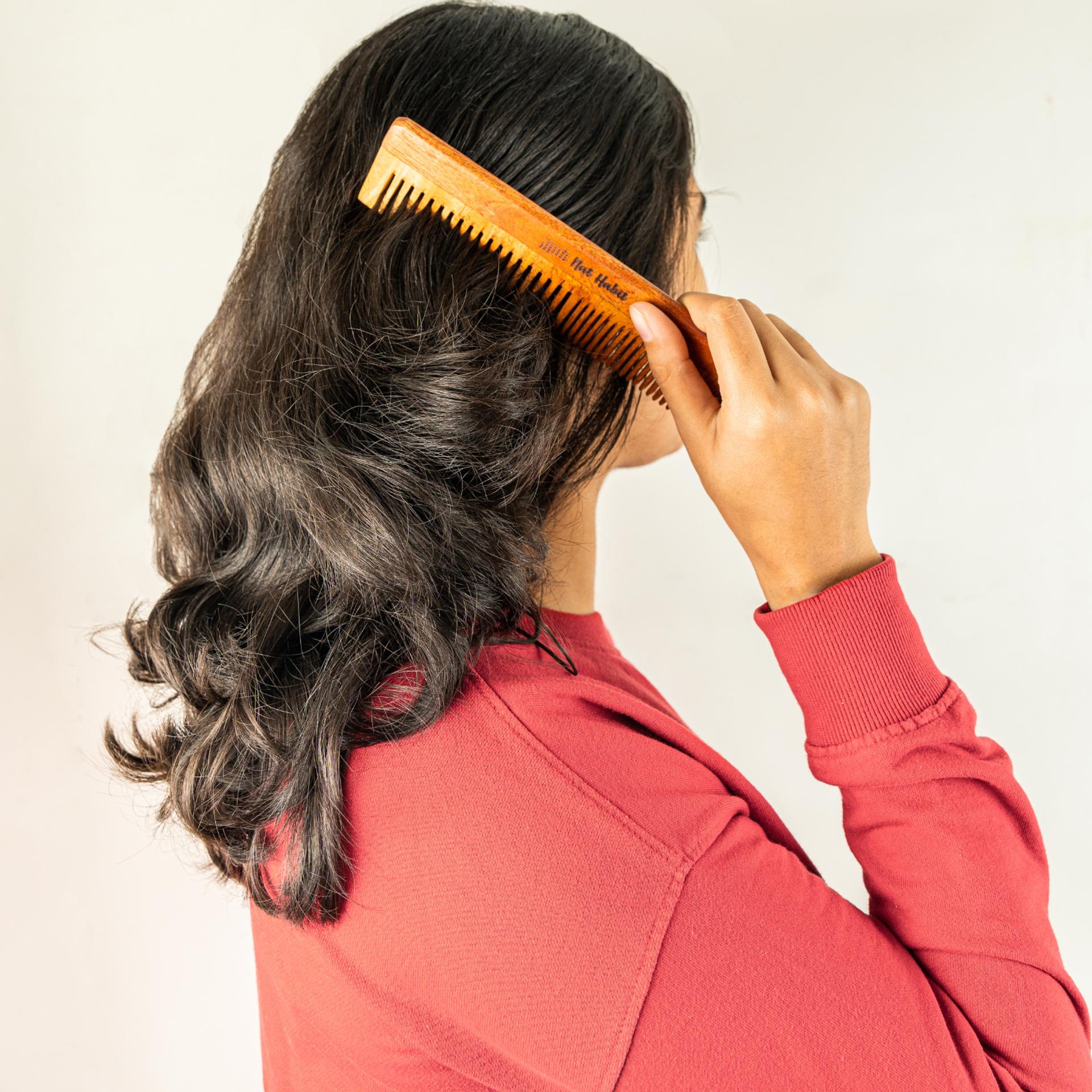
Scalp isn’t just skin—it’s a highly vascularised, innervated zone dotted with marmas—vital Ayurvedic energy points that connect nerve endings, blood vessels, and connective tissues. Combing, especially with firm yet gentle strokes, stimulates these points, enhancing microcirculation in the scalp.
This stimulation:
- Boosts oxygen and nutrient delivery to the hair follicles
- Helps regulate inflammatory mediators that may contribute to hair fall
- Facilitates lymphatic drainage, reducing puffiness and toxin accumulation
- Helps dissipate trapped pitta (heat) and tension, maintaining the energetic balance of the scalp
In essence, combing becomes both a physical and energetic recharge for your hair roots.
2. Sebum Distribution
Nature’s Built-in Hair Serum
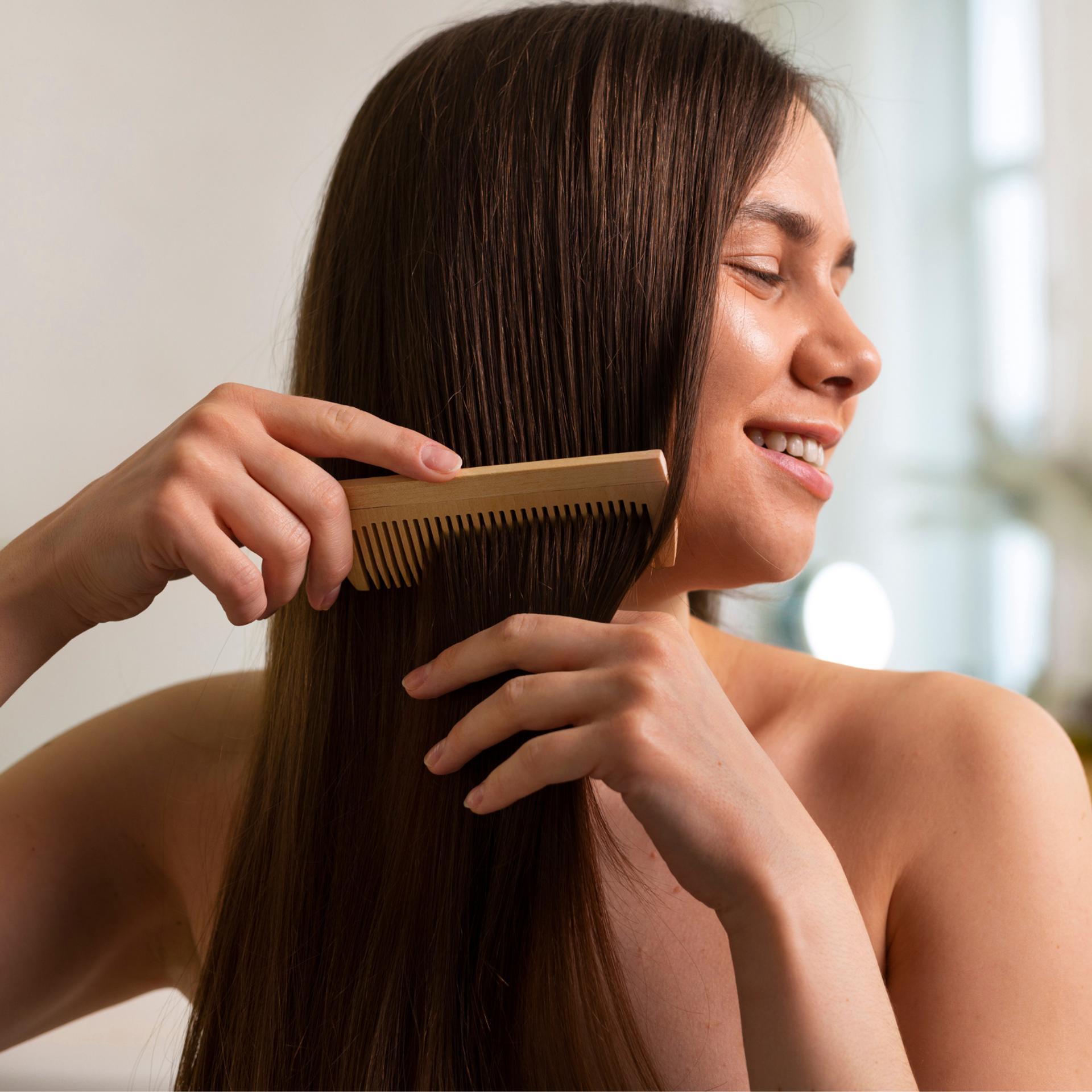
Scalp naturally produces sebum, a lipid-rich substance secreted by sebaceous glands. While often misunderstood as "grease," sebum is in fact scalp’s natural conditioner—rich in squalene, triglycerides, and wax esters that form a protective, antimicrobial, and moisture-retaining barrier.
When you comb from root to tip:
- Sebum is evenly distributed across the hair shaft
- This helps lubricate the cuticle, reducing friction and breakage
- Adds natural shine without synthetic serums
- Prevents dry ends and scalp oiliness by balancing lipid spread
Wooden combs—especially those made from neem or babool—offer added benefits. The porous structure of wood absorbs traces of oil, gently warming it via body heat and transferring it back to hair, while also providing antibacterial and anti-inflammatory support to the scalp.
3. Natural Scalp Exfoliation & Detoxification
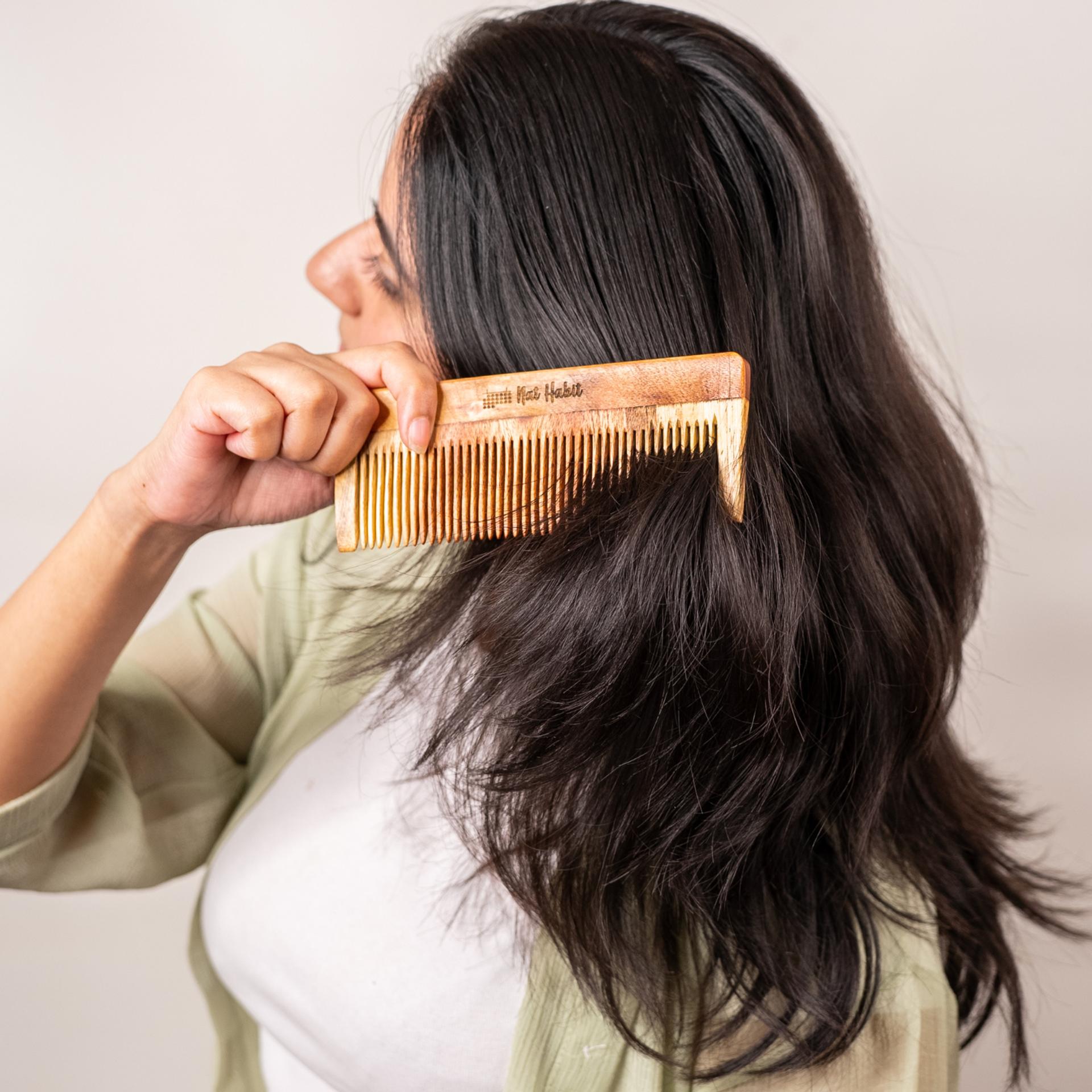
Scalp buildup is real—comprising dead skin cells, sweat, pollution, and product residue. Over time, this can clog follicles, disturb microbiome balance, and lead to conditions like seborrheic dermatitis or folliculitis.
Mindful combing acts as:
- A mechanical exfoliant, gently dislodging trapped debris
- A lymphatic stimulant, assisting detox pathways in the dermis
- A preventive action against scalp congestion, dandruff, and itchiness
This is especially important in urban environments where particulate matter and environmental toxins can accumulate invisibly over the week.
4. Combing and the Nervous System
Relaxation in Every Stroke
Combing also soothes the sensory nerves embedded in the scalp. This releases endorphins and serotonin, reducing stress hormones like cortisol—one of the key culprits behind stress-induced hair fall.
Regular evening combing can:
- Signal the body to wind down, promoting better sleep
- Help regulate the hypothalamic-pituitary-adrenal (HPA) axis
- Support parasympathetic activity, making it a calming ritual for both skin and soul
Why a Wooden Comb?
The Material Matters
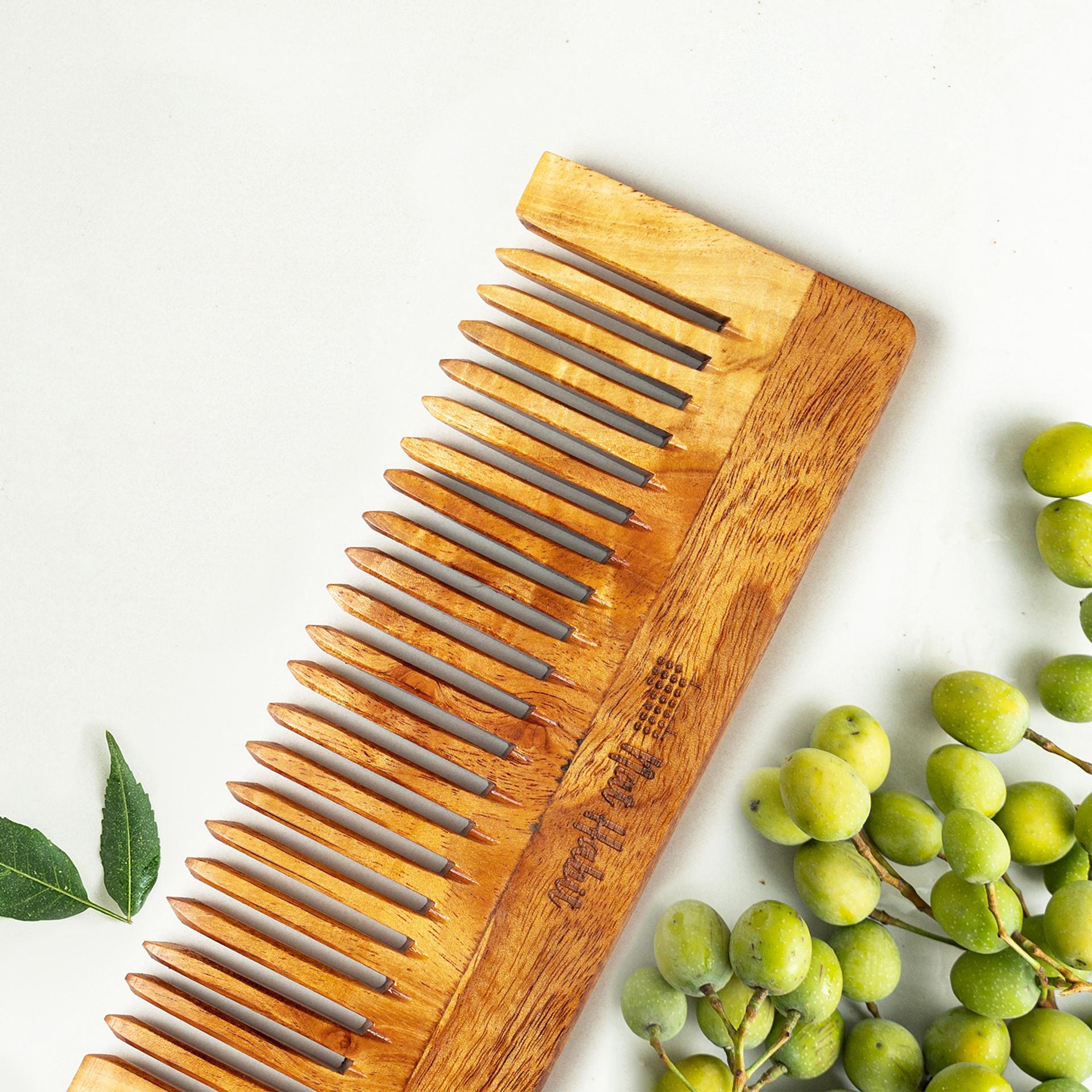
Plastic combs generate static electricity, which lifts the cuticle, weakens the strand’s integrity, and causes frizz. In contrast, natural wooden combs:
- Maintain neutral charge, reducing frictional damage
- Are non-abrasive to the cuticle layer
- Are eco-friendly, biodegradable, and sustainable
- Can be infused with herbs like neem, further enhancing scalp benefits
In Conclusion
Make Combing a Conscious Ritual
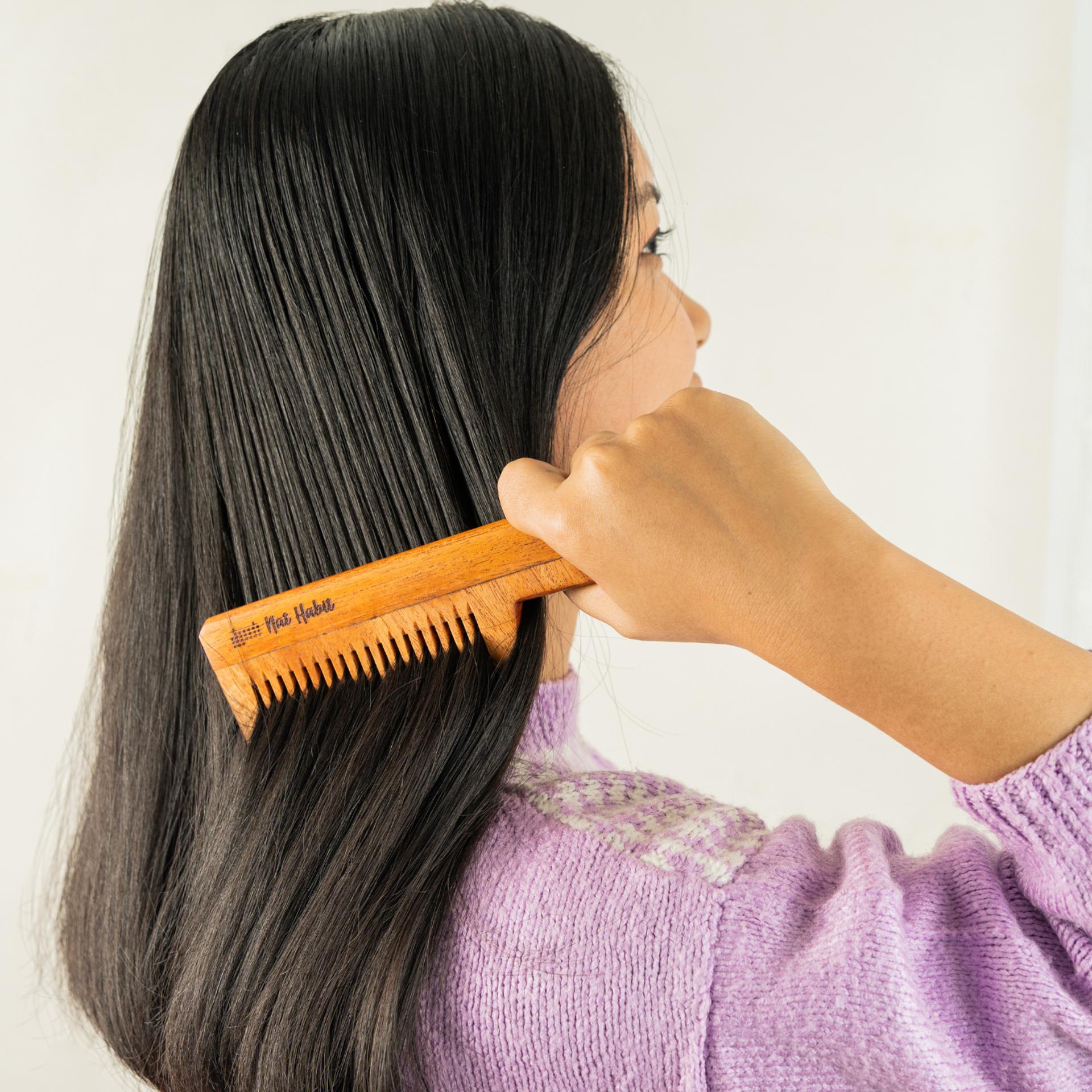
When done mindfully, combing is no longer a passive step—it becomes a tridoshic harmoniser, a circulatory booster, a nourishing delivery system, and a detoxifier all in one.
So the next time you reach for your comb, do it with awareness. Let it glide not just through your strands, but through your nerves, your roots, and your rhythms.
Choose wood. Choose calm. Choose nourishment.
Because beautiful hair doesn't start with shampoo.
It starts with how you touch it.
Kacchi Neem Comb by Nat Habit
Power Combing for Healthy, Happy Hair
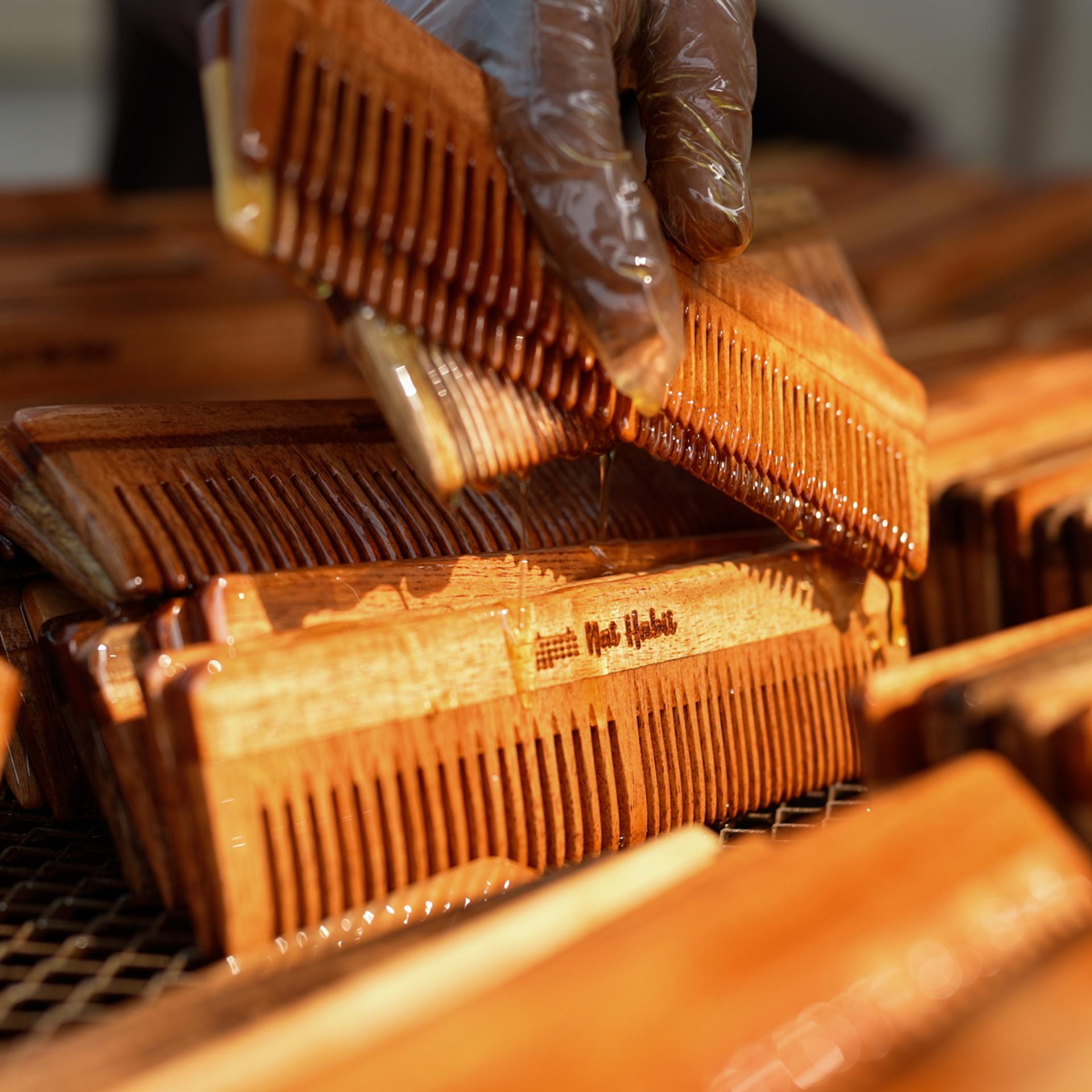
At Nat Habit, we revere the daily ritual of combing—so we designed a comb that doesn’t just detangle, but nourishes, balances, and revitalizes with every stroke.
This isn’t just any wooden comb. It’s crafted from Kacchi Neem wood—young, raw neem known for its active antibacterial and pH-balancing properties. Unlike older neem or generic wood, kacchi neem retains its living actives, making it especially potent for scalp hygiene and cuticle care.
But we didn’t stop there. Each comb is then deep-soaked in a medley of 13 nutrient-rich herbs and oils—including neem, sesame, and other Ayurvedic botanicals—for up to 24 hours. This intensive oil-treatment infuses the young neem wood with a concentrated boost of bioactives, turning the comb itself into a delivery system for your hair and scalp.
(Watch how Kacchi Neem Combs are oil-treated in our Ayurvedic Kitchen)
As the neem wood absorbs and holds these oils, it slowly releases them back—stroke by stroke—onto scalp, hair follicles, and cuticles. With each pass, hair receives a dose of natural nourishment, antimicrobial protection, and scalp-soothing care.
So next time you comb, don’t just detangle—breathe, relax, and let your scalp soak in the joy. Because this is more than combing.
This is power combing, redefined.
Buy our Oil-Treated Kacchi Neem Comb now.
Learn more
